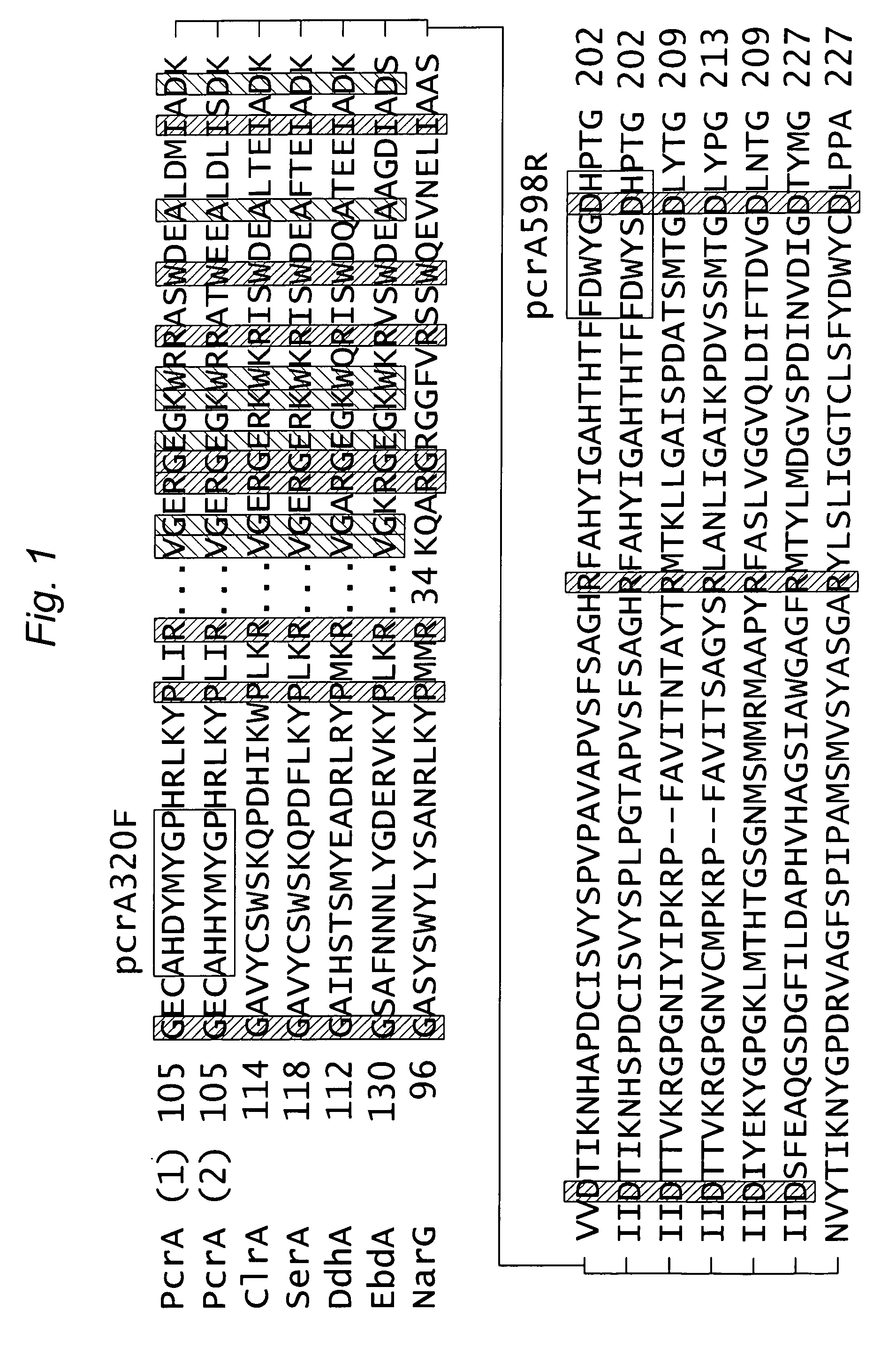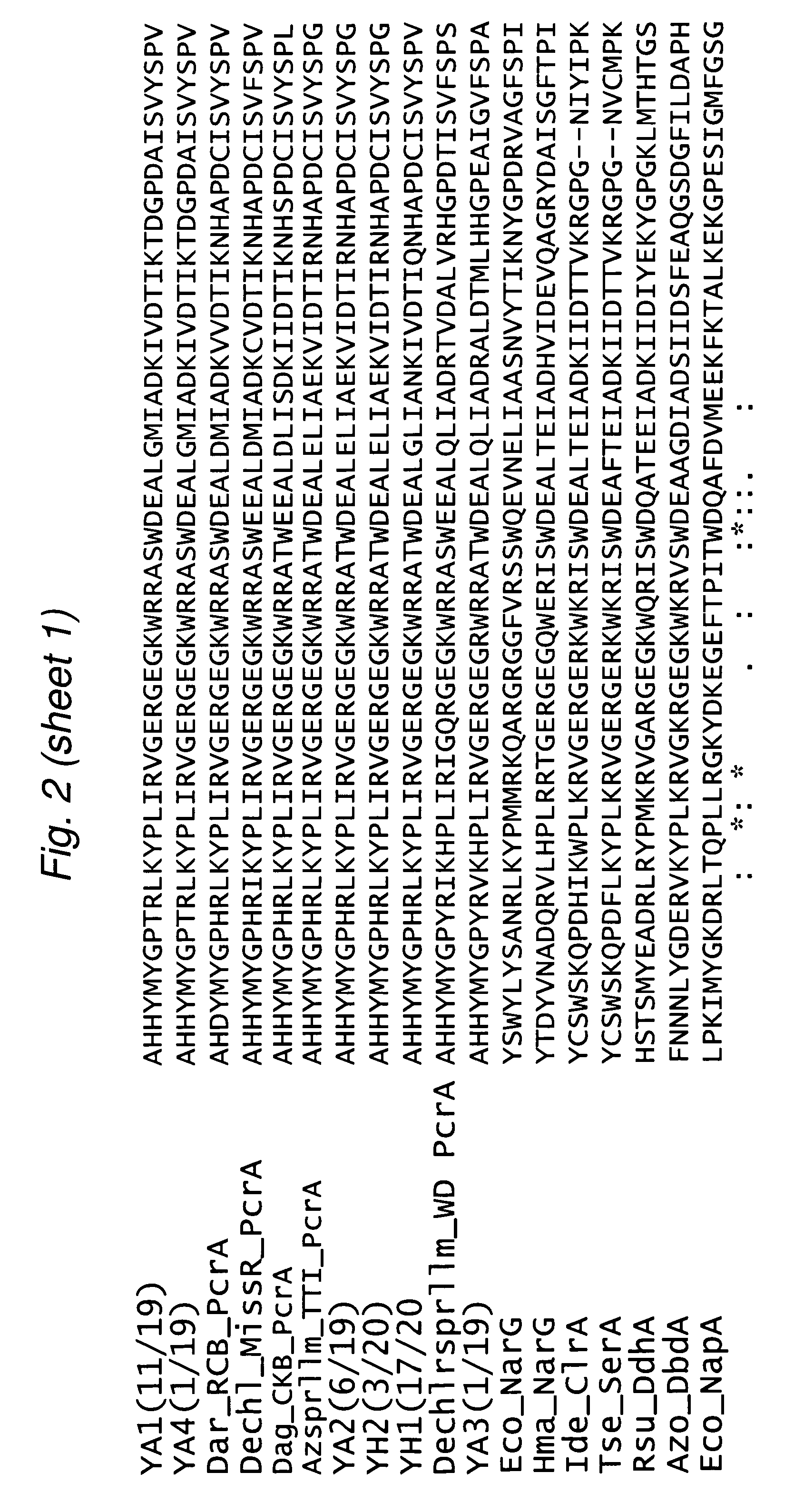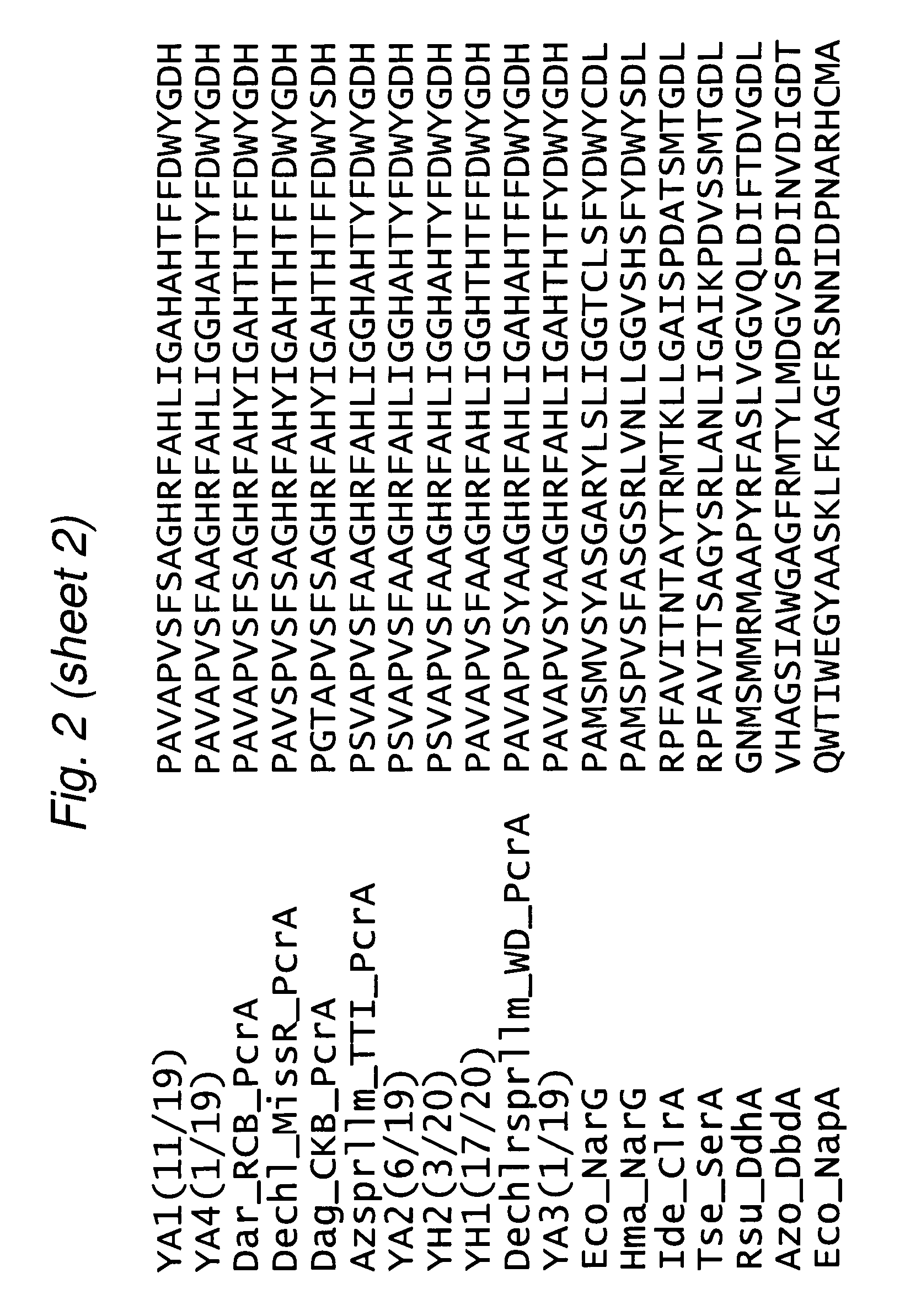Method for detecting and quantifying perchlorate-reducing bacteria
a perchlorate-reducing bacteria and quantitative technology, applied in the field of methods for detecting and quantifying perchlorate-reducing bacteria, can solve the problems of limited knowledge of the population dynamics of perchlorate-reducing bacteria in the environment, and limited quantitative information,
- Summary
- Abstract
- Description
- Claims
- Application Information
AI Technical Summary
Benefits of technology
Problems solved by technology
Method used
Image
Examples
example 1
Primer Design
[0108]To identify conserved regions, deduced PcrA protein sequences from Dechloromonas agitata CKB (Genbank accession AAO49008) and D. aromatica RCB (AAZ47315, http: / / genome.jgi-psf.org / finished_microbes / decar / decar.home.html) were aligned using Clustal W (Thompson, J. et al., Nucl. Acids. Res., 22:4673-4680 (1994)) (FIG. 1). Several other molybdoenzyme sequences from the dimethyl sulfoxide (DMSO) reductase family were included in order to identify unique PcrA sequence regions (FIG. 1). This enzyme group includes those having important roles in anaerobic respiration, in particular, respiratory reduction of oxyanions, such as nitrate, selenate, arsenate, and chlorate, in addition to perchlorate (McEwan, A. G. et al., Geomicrobiol. J, 19:3-21 (2002)).
[0109]A primer pair, pcrA320F (5′-GCGCCCACCACTACATGTAYGGNCC-3′) and pcrA598R (5′-GGTGGTCGCCGTACCARTCRAA-3′), was selected using CODEHOP (Thorell, H. D. et al., Appl. Environ. Microbiol., 69:5585-5592 (2003)) along with inspec...
example 2
Detection of pcrA Genes in Perchlorate-Reducing Cultures
[0110]Detection of PRB by qPCR using the designed pcrA primers (pcrA-qPCR) was confirmed with DNA from pure cultures of five PRB strains from four genera, Dechloromonas, Azospira, Azospirillum, and Dechlorospirillum, representing most of the previously-identified PRB (Bruce, R. A. et al., Environ. Microbiol., 1:319-329 (1999); Coates, J. D. et al., Appl Environ. Microbiol., 65:5234-5241 (1999)). The assay was also tested with DNA extracted from Yolo silt loam soil enriched with 0.25 mM perchlorate and either acetate (YA) or hydrogen (YH) provided as electron donors (Nozawa-Inoue, M. et al., Appl. Environ. Microbiol., 71:3928-3934 (2005)). Two non-PRB were also tested, including a chlorate-reducing Pseudomonas sp. PK (presumably containing the clrA gene encoding the molybdoenzyme chlorate reductase) (Bender, K. S. et al., J. Bacteriol., 187:5090-5096 (2005); Coates, J. D. et al., Appl. Environ. Microbiol., 65:5234-5241 (1999)) a...
example 3
Partial pcrA Gene Sequences
[0114]pcrA amplicons from Dechloromonas sp. strains CKB and MissR, Dechlorospirillum sp. WD, Azospirillum sp. TTI, and the soil enrichment cultures, YA and YH, were cloned using TOPO TA cloning kit (Invitrogen, Carlsbad, Calif.). Positive clones were identified following screening with M13 universal primers. For the enrichment cultures, that likely contained multiple strains of PRB, the M13 PCR products of positive clones were subjected to restriction fragment length polymorphisms (RFLP) using the restriction endonuclease Hha I. The digestion patterns were examined by performing gel electrophoresis with 3% low-melting agarose gel (Fisher Scientific, Fair Lawn, N.J.) in 1×TBE buffer at 6V / cm and 4° C. Plasmids were extracted from the pcrA clones with distinct RFLPs and from those of PRB pure cultures using Plasmid Mini kit (Qiagen, Valencia, Calif.). Inserts were sequenced at the UC Davis DNA sequencing facility (Davis, Calif.). The amino acid sequences of ...
PUM
| Property | Measurement | Unit |
|---|---|---|
| Fluorescence | aaaaa | aaaaa |
Abstract
Description
Claims
Application Information
 Login to View More
Login to View More - R&D
- Intellectual Property
- Life Sciences
- Materials
- Tech Scout
- Unparalleled Data Quality
- Higher Quality Content
- 60% Fewer Hallucinations
Browse by: Latest US Patents, China's latest patents, Technical Efficacy Thesaurus, Application Domain, Technology Topic, Popular Technical Reports.
© 2025 PatSnap. All rights reserved.Legal|Privacy policy|Modern Slavery Act Transparency Statement|Sitemap|About US| Contact US: help@patsnap.com



